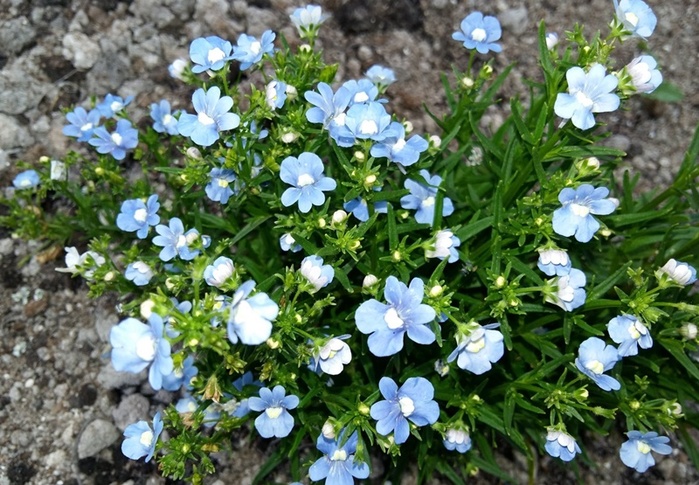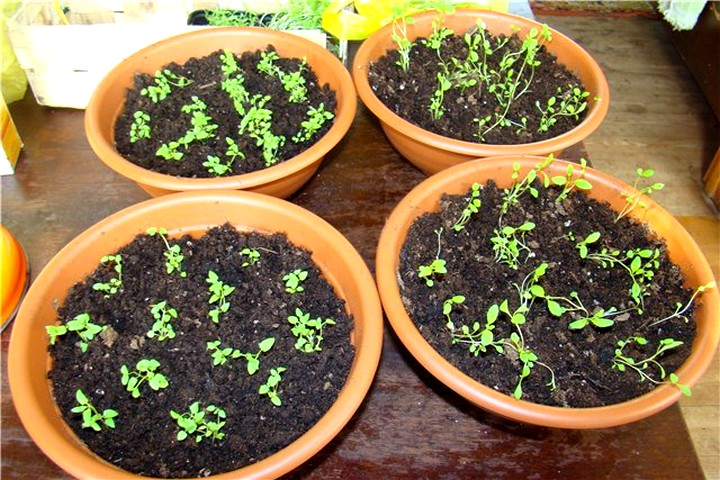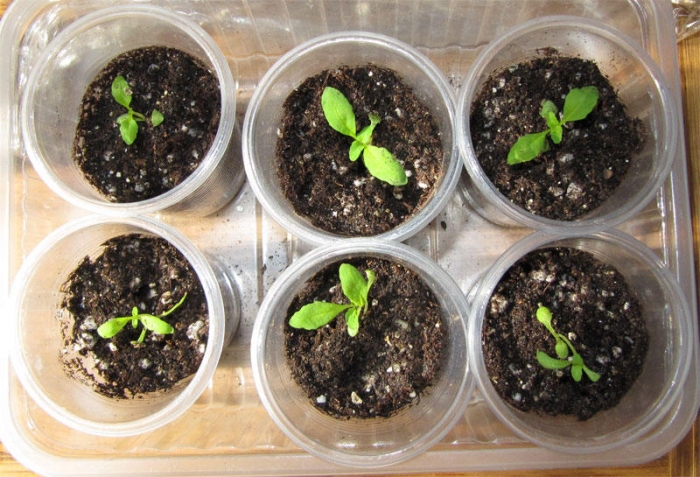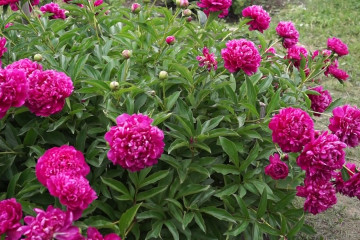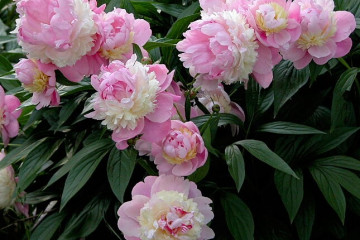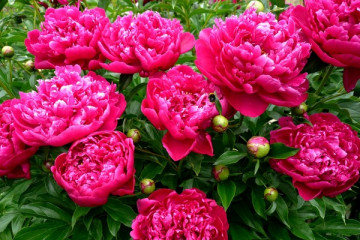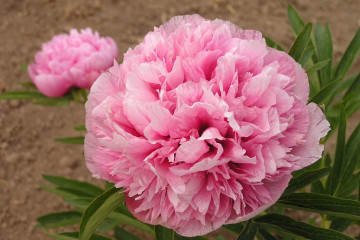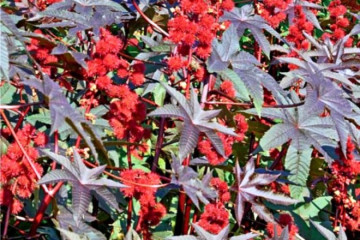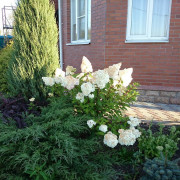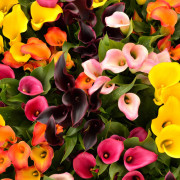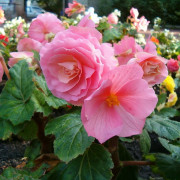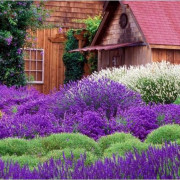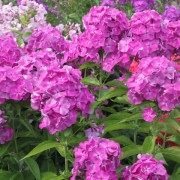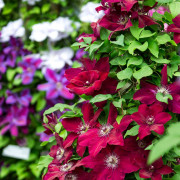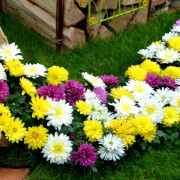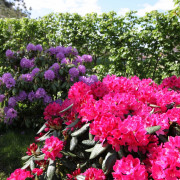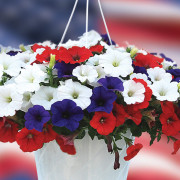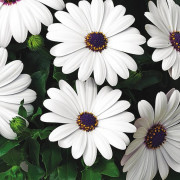Nemesia - planting and caring for the garden
Content:
Nemesia is an ornamental, flowering plant. An annual or perennial flower, thanks to the variety of colors, has become popular with Russian flower growers. With the help of this wonderful plant, you can make your backyard more vivid and unusual.
What nemesias look like
Nemesia (nemesia alien) belongs to the Norichnikov family. She came to Russia from South Africa. The plant got its name in honor of the Greek goddess of retribution - Nemesis. Due to the variety of species, unpretentiousness in terms of care and attractive appearance, the flower is loved by many growers.
The plant may have linear or lanceolate toothed leaves, located opposite to the stem. Branched, tetrahedral, erect stem reaches 30-60 cm. Flowers of a complex appearance and irregular shape appear in the leaf axils. The tubular corolla has 2 bends: the upper one has 4 lobes and the lower one has 2 lobes. The color of the flower depends on the variety and can be very diverse. Long bloom, from June to September. In autumn, fruit-boxes with numerous small seeds are formed. Seeds retain their germination capacity for 2 years.
Classification of types of nemesia
Due to the many types and variety of colors of nemesia, you can combine them and give your backyard an unforgettable look. The most popular are considered lush nemesia, hybrid, multi-colored and goiter.
Lush nemesia (Nemesia floribunda)
A flowering bush up to 40 cm high. A plant with strong, bright olive shoots and miniature flowers of a pale blue color.
Nemesia multi-colored (Nemesia versicolor)
Annual crop with original colors. The species has thin, highly branched shoots up to 25 cm long. From June to late autumn, the bush is covered with small pink flowers. The species has the most popular varieties: Blue Bird and Edelbdau.
Struma nemesia (Nemesia strumosa)
This annual species has been known since the end of the 19th century. Strongly branched shrub with bright green shoots in height does not exceed 40 cm. Irregularly shaped flowers with a diameter of 30 mm are colored lemon, orange, red or pink. The most popular varieties are Sparklers, Nashinal Ensign, Aurora and Fire King. A distinctive feature of the plant is that in nemesia goiter flowers fall off and reappear throughout the summer.
Nemesia hybrid (Nemesia hybrida)
This is an annual crop with large flowers of irregular shape, which are collected in inflorescences - brushes.The plant is medium-sized, up to 60 cm high. Flowers of various colors appear on branched stems from June. The most popular varieties are Triumph, Carnival, King's Mantle and Tumbelin.
The cultivars that are most popular with horticulturists
Nemesia flowers have a large number of varieties that differ in height and color of flowers.
Carnival
Popular and long-flowering variety. The plant forms a compact but highly branched bush. Blooms in large flowers from June to the first frost. Looks beautiful in hanging pots. After the shortening of the shoots, the nemesia Carnival blooms again.
Triumph
Large-flowered variety that can be grown outdoors and at home. Bright flowers of various tones look beautiful against the background of large, bright green foliage. Triumph is grown in seedlings. Seeds are sown in the first half of April.
Tumbelina
An annual, abundantly flowering plant with heavenly, turquoise, lavender flowers. The variety is new, belongs to the hybrid species. The height of the bush reaches 30-60 cm.
Robe of the King (Cardinal)
A variety of goiter nemesia with bright blue flowers. The bush is profusely flowering, looks great in a flower bed and in flowerpots. Prefers to grow in an open, sunny place with nutritious soil. Blooms from June until the first frost.
Aurora
This is also goiter nemesia. Aurora is an annual shrub with highly branched shoots, reaching a height of 40 cm. In June, the plant is covered with large inflorescences of white or bright red color.
Fanfair
Strongly branched annual shrub with lemon or cream flowers. Abundant flowering begins from the first warm days and lasts until the end of September. The variety belongs to goiter nemesia.
Sparklers
Variety with two-tricolor inflorescences. The bush is compact, up to 40 cm high. Flowers of irregular shape, with a diameter of 2.5 cm. The culture is unpretentious, it can grow in open ground and at home.
Fire King
The annual plant grows as a compact, medium-sized bush. In June, the ornamental culture is covered with fiery flowers with an orange crop. Flowering is long, until the first frost.
Nashinel Ensign
A popular variety with red and white flowers. The culture is annual, blooming for a long time. Looks great both in single plantings and in conjunction with other low-growing plants.
Edelbau
A variety with one-color (all shades of blue), two-color and even three-color inflorescences. One flower can combine: blue and white, pink and orange, lemon and lavender colors.
Blue Bird
The variety belongs to the multi-colored species. This is a small, compact shrub up to 25 cm high. Flowering is long, lasting the entire warm season. With the onset of sunny days, the plant is covered with miniature sky-colored flowers with white or lemon spots on the petals.
How nemesia breed
Flowers reproduce well by seeds. So that it takes less time from sowing to flowering nemesia, it is better to plant it in seedlings.
Nemesia - growing from seed, when to plant
The seeds can be harvested by yourself or purchased from the store. Seedlings for seedlings are planted in the second half of March. Before planting, the seeds are kept in a weak solution of potassium permanganate or hydrogen peroxide.
Low containers or boxes are suitable for growing. The soil can be purchased at the store, or you can do it yourself. For this, peat and sand are mixed in proportions of 2: 1. The soil is disinfected or frozen before planting.
Planting seeds:
- The container is filled with nutrient soil.
- Thoroughly leveled, but not tamped.
- The seeds are sown superficially, the soil is moistened with a spray bottle.
- The container is covered with foil and removed to the warmest place.
Seedling care
Seed germination occurs on day 15. To prevent the seedlings from stretching, they are transferred to a cooler room. When caring for a young plant, you must adhere to the following rules:
- Temperature conditions. After emergence, the film is removed. To prevent the seedlings from stretching, the optimum temperature should be within +18 ° C.
- Watering. It is carried out with warm, settled water using a spray bottle. Irrigation should be regular and moderate. Do not allow the soil to dry out and moisture stagnation.
- Lighting. Seedlings need bright light for good growth.
Dive and transfer
After the appearance of 2-3 true leaves, the seedlings dive. For this, the seedlings are carefully removed from the common container and seated in separate cups. After picking, the seedlings are fed for 10 days. For this, a mineral fertilizer complex is used.
Nemesia is a vegetative way of reproduction
All hybrid varieties are bred by cuttings. In August, the apical shoots are cut with a length of 20-30 cm. Cuttings are placed in the nutrient soil at an angle and covered with a glass cover for quick rooting. The soil is irrigated periodically, preventing the formation of an earthen crust. At the end of May, rooted shoots can be transplanted into open ground.
Nemesia - planting and care in the open field
In open ground, seedlings are planted only after warming up the soil and the end of spring frosts. Depending on the region, the term will be as follows:
- in the south - the first half of May;
- in the middle lane - May 20;
- in Siberia - early June.
For abundant and long flowering, it is necessary to correctly approach the choice of a place. It should be located on a hill and well lit. The soil is suitable light, slightly acidic, well fertilized.
Step-by-step planting instructions
Planting nemesia does not require special soil preparation. Procedure:
- The site is dug onto a shovel bayonet and flavored with mineral fertilizer or humus.
- At the chosen place, shallow holes are made, at a distance of 30 cm from each other.
- Seedlings are planted, covered with soil and the top layer is compacted.
- The planted plant is spilled with settled water.
- To retain moisture, the soil is mulched.
Features of care in the garden
Plant care is simple. In order for the bush to turn into a blooming ball, it needs regular watering and timely pinching of the top.
Watering and feeding
Watering should be abundant and regular. In dry weather, it is carried out every 2-3 days, in rainy season - as the soil dries out. Irrigation is done in the morning or in the evening so that direct sunlight does not provoke a burn of leaves and flowers.
Top dressing is applied 2-3 times a season:
- in the spring, during the growing season, nitrogenous fertilizers are applied;
- during flowering - potassium-phosphorus.
Mulching and loosening
For lush and long-lasting flowering, it is necessary to superficially loosen the soil after each watering. This procedure will make the soil water and air permeable, which will have a beneficial effect on the condition of the root system.
Pruning
To prolong flowering, it is important to promptly remove faded inflorescences and prune the apical shoots. This procedure will allow the plant to release side shoots, on which numerous flowers will soon appear.
Transfer
Nemesia is a thermophilic culture. Therefore, after the first frost, the bush is dug up and transplanted into a flower pot.The plant is brought into an apartment and grown as a houseplant.
When and how it blooms
Nemesia is an ornamental plant with flowers of an unusual shape. Inflorescences with a diameter of not more than 2 cm have part of accrete petals and part of isolated ones. The color can be very diverse: blue, light blue, pink, red, orange. Also flowers can be bicolor and tricolor.
Possible growing problems
Nemesia is an unpretentious flower, it can grow in all corners of Russia. But if agricultural technology is not followed, diseases and pests may appear on the bush.
Nemesia is a moisture-loving culture, so root rot and other fungal diseases often appear on it. It is difficult to get rid of such diseases, therefore, so that the flower does not infect neighboring crops, it is dug up and burned.
Sometimes flowers are infected by spider mites and other insect pests. Therefore, it is necessary to conduct a weekly visual examination, when the first signs of infection appear, start treatment. To do this, use insecticides or folk remedies. Processing is carried out in dry, calm weather, in the evening.
Signs of improper care
Failure to follow the rules of care can lead to negative consequences. Main problems:
- The plant lags behind in growth and development. The reason is depleted soil.
- The root system rots. This means that the plant is too often watered with cold water.
- Short-term flowering. The reason is the lack of pinching and untimely removal of faded inflorescences.
Use in landscape design
Nemesia is a ground cover plant. In a short time, it forms a flowering carpet. The culture looks great on alpine slides, rockeries and mixborders, and along paths. The plant is combined with low-growing annuals:
- pansies;
- marigolds;
- lobelia;
- petunia.
Even a novice florist can grow nemesia, planting and caring for which is not difficult. Having picked up the varieties you like, you can turn your home plot into a piece of paradise in a short time. And if you follow the agrotechnical rules, the ornamental plant will delight with flowering throughout the warm period.

